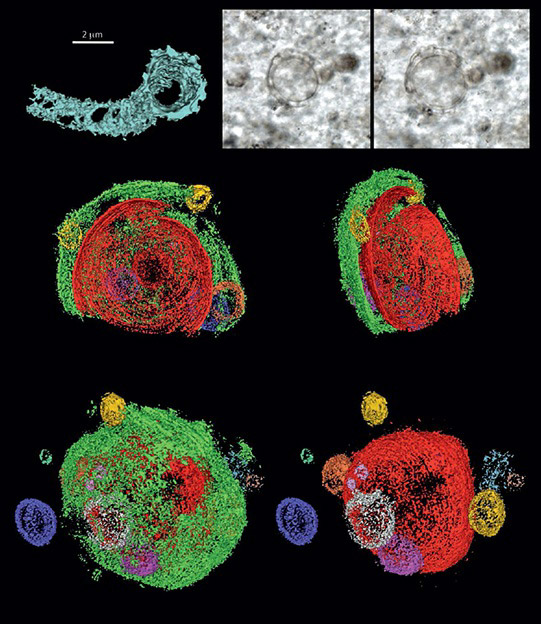For most of Earth’s early history, specifically throughout the Archean eon, life was limited to a variety of simple, single-celled prokaryotic organisms. Prokaryotes, lacking a cell nucleus or any other enclosed organelles found in complex organisms, thrived on Earth for billions of years, even mastering complex chemical reactions like photosynthesis.
However, around 2 billion years ago, a significant evolutionary event occurred. Some prokaryotes evolved to develop a membrane-enclosed nucleus and other organelles, marking the transition to eukaryotic cells. This development allowed for the segregation of genetic material within the nucleus and specialized energy generation in compartmentalized mitochondria.
Eukaryotes represent a distinct branch on the tree of life, separate from the other two branches of life – bacteria and archaea – which are prokaryotic. Unlike their prokaryotic counterparts, eukaryotes have evolved into a diverse range of multicellular organisms, including algae, plants, fungi, and animals, contributing to the rich tapestry of life forms we see today.
The exact origins of eukaryotic cells remain a subject of debate and research among evolutionary biologists. One theory suggests that precursor prokaryotic cells developed internal structures through the inward folding of their membrane. Another idea, known as endosymbiosis, proposes that predator prokaryotes could have absorbed prey cells, transforming them into specialized organelles. For instance, chloroplasts in eukaryotic cells, essential for photosynthesis, may have evolved from endosymbiotic cyanobacteria. Additionally, some hypothesize that bacterial and archaean cells may have fused to form the first eukaryotic cells. The quest to understand the genesis of eukaryotic cells continues, with researchers exploring these and other hypotheses to uncover this crucial chapter in the story of life on Earth.

